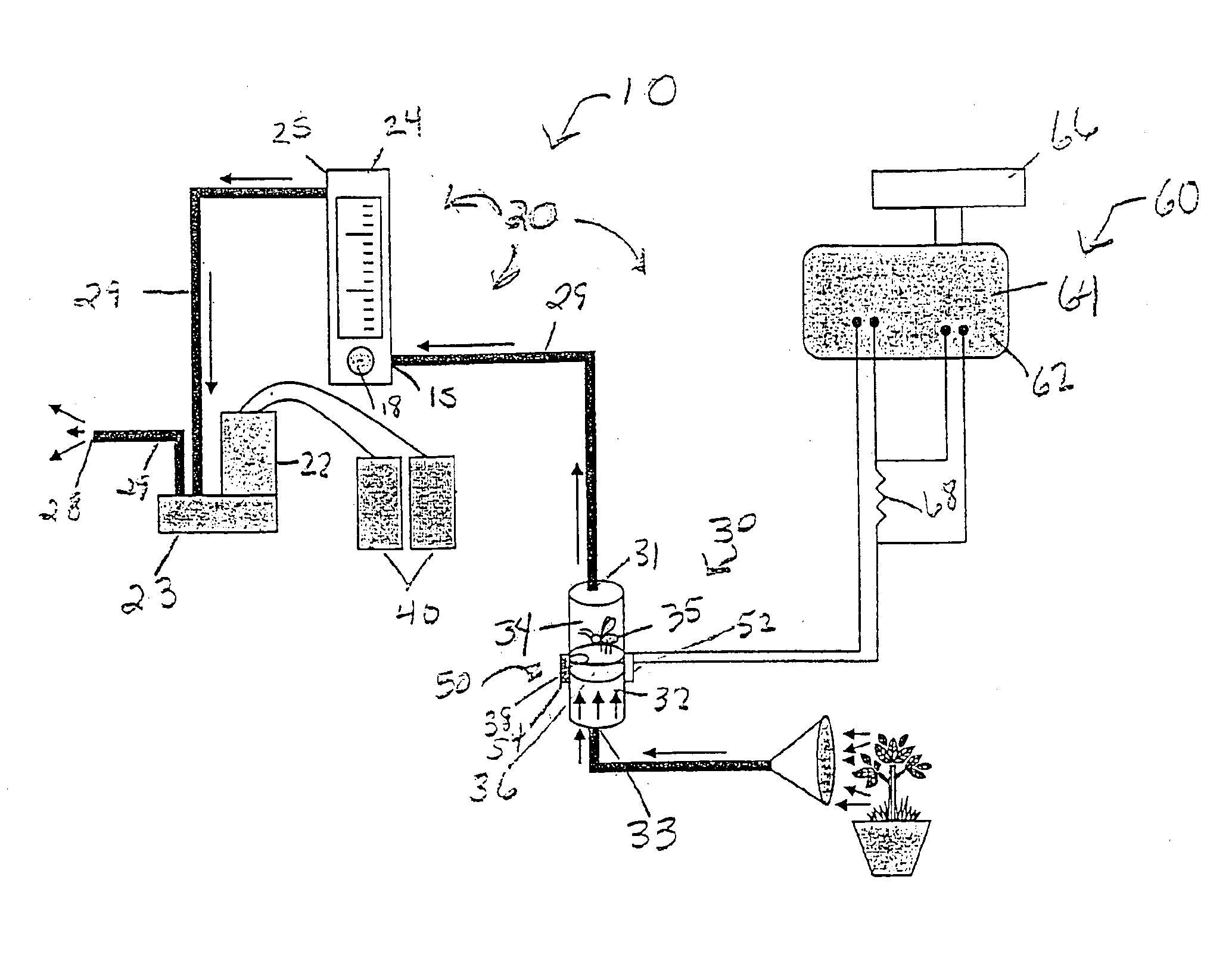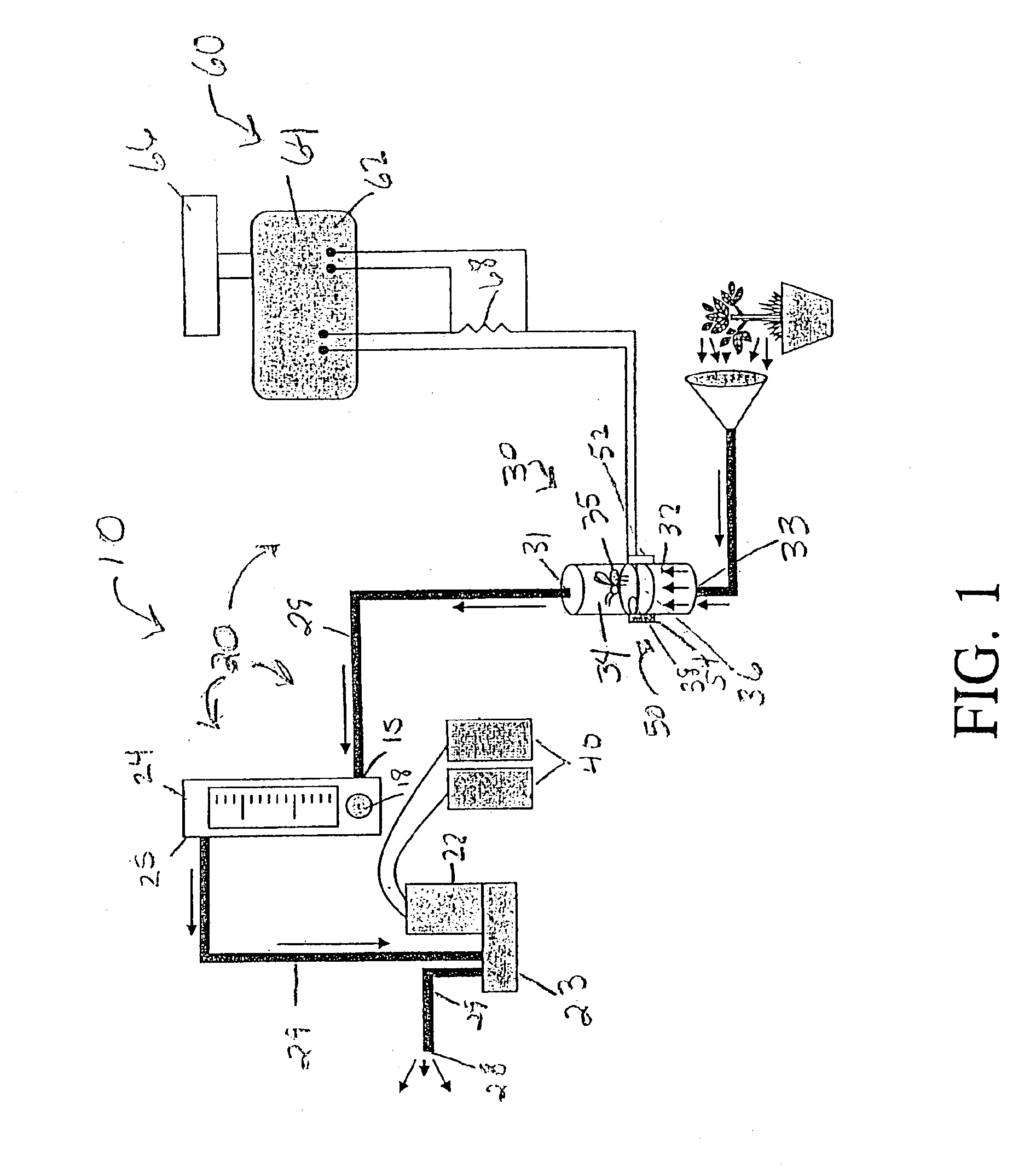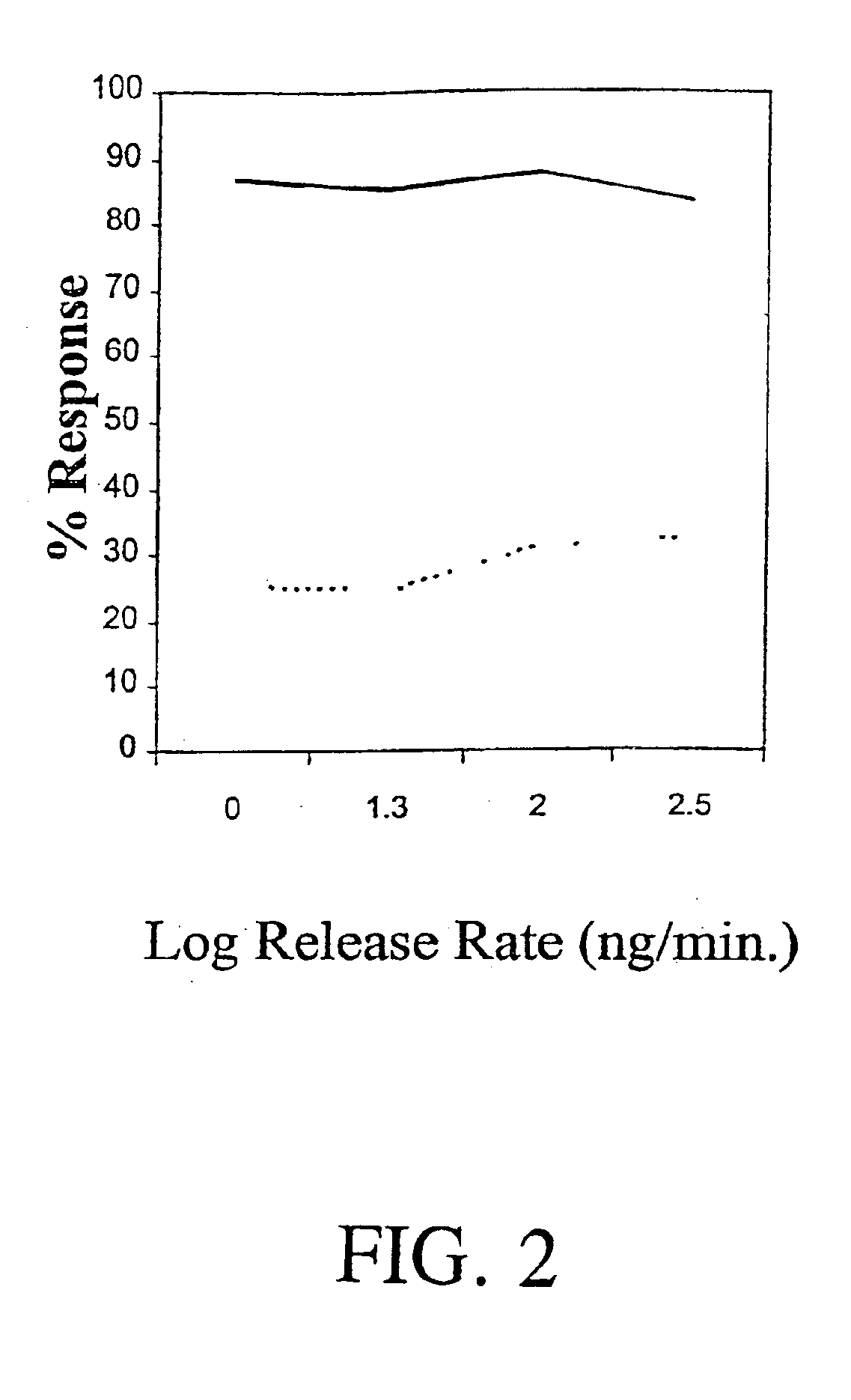Utilization of invertebrate learning for flexible and sensitive monitoring and identification of chemicals
a technology of invertebrate learning and chemical detection, applied in the field of chemical detection system, can solve the problems of general lack of reliance on nature as a model for technological developmen
- Summary
- Abstract
- Description
- Claims
- Application Information
AI Technical Summary
Benefits of technology
Problems solved by technology
Method used
Image
Examples
example 1
[0057]The insects used in the following examples were laboratory reared at about 28° C. and about 50-70% relative humidity, with a 16:8 light cycle. Larvae of Heliothis zea were reared on pinto bean artificial diet according to the method described by Burton (U.S.D.A. Tech. Bull. ARS SER. 33 / 134, 1969; herein incorporated by reference). Microplitis croceipes were reared on H. zea as described by Lewis and Burton (Ann. Entomol. Soc. Amer., Volume 64, 471-473, 1970; herein incorporated by reference). Adult wasps were held in Plexiglas cages provided with water and honey. In all experiments females wasps were about 2-6 days old and host larvae were about 2nd and 3rd instar. Each experiment was completed over about 2 to 5 days with females from different cohorts each day. Each day, the same number of wasps was used for all treatments within an experiment.
example 2
[0058]Female M. croceipes, about 2-4 days old were starved (provided water only) for about 26 to 30 hours at the time of the bioassays described below. The wasps were trained to detect trans-caryophyllene and methyl jasmonate which are two plant compounds; cyclohexanone which is a component of explosives; and diisopropyl-amino-ethanol which is a component of a neural toxin. These compounds were placed in capillary tubes that varied in diameter and the length of the tube above the meniscus of the solution to vary the release rates of the compounds. This procedure followed a modification of Stephan's Law:
Q=DAC / L
whereby the release rate Q is derived from D, a diffusion constant specific to the compound, A the cross-sectional area of the capillary tube, C the concentration gradient and L the length of the vapor column. The dimensions and formulations for the tubes are listed in Table 1 below. For about 3, 30, and 300 ng / minute release rates, 3 tubes at about 1, 10, and 100 ng / min were c...
example 3
[0063]This example characterized the coiling behavioral response of wasps challenged in different ways after identical training. Both vanilla and orange aromas were used as target stimulus. After training, the ‘close range’ (Proximal) behavior was examined. About two hours after training, an approximately 20 μl pipet was presented to the wasps held individually in glass tubes (about 0.13×4.5 cm). The pipet was pointed towards the head of the insect and moved gently back and forth for about 2-5 seconds while the wasp's behavior was observed. Each wasp was tested about three times sequentially, first with a pipet dipped into the extract they experienced during the training phase (vanilla or orange), then with a pipet dipped into the alternative extract, and finally with a pipet dipped into the first extract. About half of the wasps of the control group were tested with vanilla first, the others were tested with orange first. Approximately ten minutes elapsed between tests. Upon presen...
PUM
| Property | Measurement | Unit |
|---|---|---|
| time | aaaaa | aaaaa |
| time | aaaaa | aaaaa |
| diameter | aaaaa | aaaaa |
Abstract
Description
Claims
Application Information
 Login to View More
Login to View More - R&D
- Intellectual Property
- Life Sciences
- Materials
- Tech Scout
- Unparalleled Data Quality
- Higher Quality Content
- 60% Fewer Hallucinations
Browse by: Latest US Patents, China's latest patents, Technical Efficacy Thesaurus, Application Domain, Technology Topic, Popular Technical Reports.
© 2025 PatSnap. All rights reserved.Legal|Privacy policy|Modern Slavery Act Transparency Statement|Sitemap|About US| Contact US: help@patsnap.com



